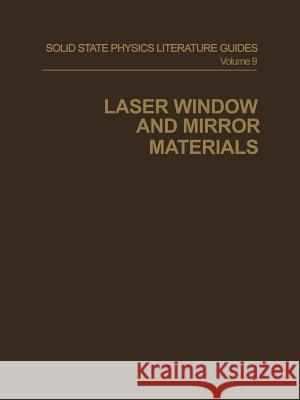Laser Window and Mirror Materials » książka
Laser Window and Mirror Materials
ISBN-13: 9781468481716 / Angielski / Miękka / 2012 / 290 str.
Charles S. Sahagian Chief, Electromagnetic Materials Technology Branch Deputy for Electronic Technology Hanscom AFB, MA 01731 I t should not be surprising that an event as significant as the discovery of the laser has had some con- comitant impact on other areas of science and technology, but the extent of the impact was grossly unpredicted. Upon perusal of this bibliography, devoted to the subject of laser window and mirror materials, it becomes very apparent that the effect of the laser on materials R&D has been enormous. Several hundred papers and reports, representing millions of dollars of effort, have been promulgated over the past decade; and as new frequencies, improved tunability, higher power, and other charac- teristics are achieved, we can expect even greater demands and requirements on the materials com- munity. What are some of the highlights disclosec by this bibliography with regard to work already ac- complished? First, one can note the extensive investigations into developing new materials while at the same time improving old ones. Among the latter, alkali halides, for example, have essentially had a rebirth. I n the past five years more progress has been achieved in the chemical and structural perfec- tion of this class of materials than in the entire preceding century. Also carried along in the surge for improved laser materials have been the alkaline earth fluorides (prime candidates for 3-to 5-J, Lm ap- plications), chalcogenides, semiconductors, oxides, and others.











